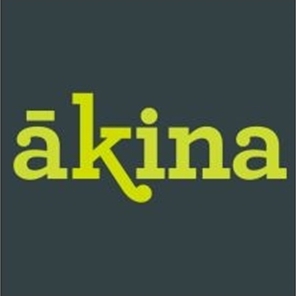Economic Hangover Lingers, But Signs Of Life Emerge In The Property Market
- Average asking prices dipped modestly in most regions, with the national figure remaining below $900,000 for over two years — a sign of ongoing price stability.
- Total stock at decade-high levels with 36,870 properties for sale in March 2025 — up 10.9% year-on-year
- Properties sold slightly faster in March – spending less time on site than in February
We might be ready to “thrive in 2025”, but the property market is still playing it safe.
Despite growing economic optimism, new data from realestate.co.nz shows the property market remains in recovery mode. In March, new listings were up nationally, month-on-month and year-on-year, and total stock was up in all but one region, a sign that seller confidence is back. Buyer activity remains cautious, but it’s worth noting that sales volumes were up in February, the Real Estate Institute of New Zealand (REINZ) data showing 6,287 properties sold nationally — a 3.4% increase compared to the same month last year.
Average asking prices were down year-on-year across most regions in March, declines generally modest, pointing to a relatively stable market. Nationally, the average asking price dipped 2.6% compared to March 2024, with Nelson the only region to record year-on-year growth. Properties sold slightly faster during March, with properties spending less time listed on realestate.co.nz than in February. However, there’s no sign of a sharp upswing yet.
Vanessa Williams, spokesperson for realestate.co.nz, says: “This isn’t a runaway market. But there are signs of quiet momentum as 2025 progresses.”
Two years of steady prices show buyers still holding back
The national average asking price remained relatively stable in March, edging up just 0.8% month-on-month but still down 2.6% compared to March last year. Williams says it’s remarkable how consistent prices have been over the past couple of years:
“The national average asking price has remained below $900,000 for over two years – last exceeding that mark in December 2022 at a seasonally adjusted $916,487. At the peak of the market, in January 2022, it reached $983,415.”
Year-on-year, only one region, Nelson & Bays, saw average asking price growth during March (up 2.5% to $866,948). Month-on-month, three regions recorded increases: Coromandel (up 1.5% to $1,046,099), Central Otago/Lakes District (up 1.1% to $1,472,678), and the West Coast (up 5.3% to $489,845).
However, the broader trend remained one of caution in March, with six regions (Gisborne, Hawke’s Bay, Marlborough, Northland, Otago, and Waikato) experiencing both month-on-month and year-on-year declines.
“Despite signs of growing economic confidence, it’s yet to translate into upward price pressure, and with the stock levels the way they are, we don’t anticipate this changing in the short term,” said Williams.
Stock remains at decade-high levels
With 36,870 properties on the market in March 2025, buyers were spoiled for choice. National stock levels were up 10.9% compared to March 2024, signalling growing seller confidence. Every region recorded a year-on-year increase in stock, except Northland, where levels were flat, dipping just 0.4%.
Williams said the lift in stock reflects a shift in the market.
“Two years ago, many sellers hit pause — high interest rates and election uncertainty made people cautious about listing. That’s clearly changed. There were 7,586 more properties for sale last month than in the same month in 2023, showing how far we’ve come.”
She adds that the data suggests properties sold more quickly last month. “In February, a significant proportion of listings had been on site for 60 to 90 days. In March, a larger share was listed for a shorter period — between 30 and 60 days.”
“Seeing more listings spend less time on site points to properties selling slightly faster. This trend is also mirrored in the REINZ sales data from February,” explained Williams.
13 of 19 regions see year-on-year lift in new listings
Vendors were busy in March. Nationally, new listings rose 5.0% year-on-year, reaching 12,029 – another signal of growing seller confidence. 13 of our 19 regions recorded year-on-year increases, with Gisborne seeing the largest percentage jump, up 23.8% compared to March 2024. It’s the second consecutive month the region has led the country in year-on-year growth. At the other end of the spectrum, Coromandel saw the biggest decline, with new listings down 28.8% year-on-year.
Williams said this highlights the localised nature of New Zealand’s property market:
“It’s a reminder that there’s no one-size-fits-all in real estate – each region moves to its own rhythm. Getting local advice is invaluable.”
About realestate.co.nz
We’ve been helping people buy, sell, or rent property since 1996. Established before Google, realestate.co.nz is New Zealand’s longest-standing property website and the official website of the real estate industry.
Dedicated only to property, our mission is to empower people with a property search tool they can use to find the life they want to live. With residential, lifestyle, rural and commercial property listings, realestate.co.nz is the place to start for those looking to buy or sell property.
Whatever life you’re searching for, it all starts here.
Want more property insights?
- Market insights: Search by suburb to see median sale prices, popular property types and trends over time.
- Sold properties: Switch your search to sold to see the last 12 months of sales and prices.
- Valuations: Get a gauge on property prices by browsing sold residential properties, with the latest sale prices and an estimated value in the current market.
Glossary of terms:
Average asking price (AAP) is neither a valuation nor the sale price. It is an indication of current market sentiment. Statistically, asking prices tend to correlate closely with the sales prices recorded in future months when those properties are sold. As it looks at different data, average asking prices may differ from recorded sales data released simultaneously.
New listings are a record of all the new residential dwellings listed for sale on realestate.co.nz for the relevant calendar month. The site reflects 97% of all properties listed through licensed real estate agents and major developers in New Zealand. This description gives a representative view of the New Zealand property market.
Stock is the total number of residential dwellings that are for sale on realestate.co.nz on the penultimate day of the month.
Rate of sale is a measure of how long it would take, theoretically, to sell the current stock at current average rates of sale if no new properties were to be listed for sale. It provides a measure of the rate of turnover in the market.
Seasonal adjustment is a method realestate.co.nz uses to represent better the core underlying trend of the property market in New Zealand. This is done using methodology from the New Zealand Institute of Economic Research.
Truncated mean is the method realestate.co.nz uses to supply statistically relevant asking prices. The top and bottom 10% of listings in each area are removed before the average is calculated to prevent exceptional listings from providing false impressions.


 NIWA: Flooding From Underneath - New Tool Reveals Shallow Groundwater Elevations
NIWA: Flooding From Underneath - New Tool Reveals Shallow Groundwater Elevations Commerce Commission: Commission Concludes Auckland Airport Over-charging By $190 Million
Commerce Commission: Commission Concludes Auckland Airport Over-charging By $190 Million The Future Is Rail: Ferry Decision - Common Sense Prevails
The Future Is Rail: Ferry Decision - Common Sense Prevails Aotearoa Food Rescue Alliance: Grocery Market Reform Must Include Mandatory Food Rescue Partnerships
Aotearoa Food Rescue Alliance: Grocery Market Reform Must Include Mandatory Food Rescue Partnerships Hugh Grant: Zero Trust Security - A Buzzword Or The Ultimate Protection?
Hugh Grant: Zero Trust Security - A Buzzword Or The Ultimate Protection? Bill Bennett: Comcom revisits fibre rules as competition intensifies
Bill Bennett: Comcom revisits fibre rules as competition intensifies



